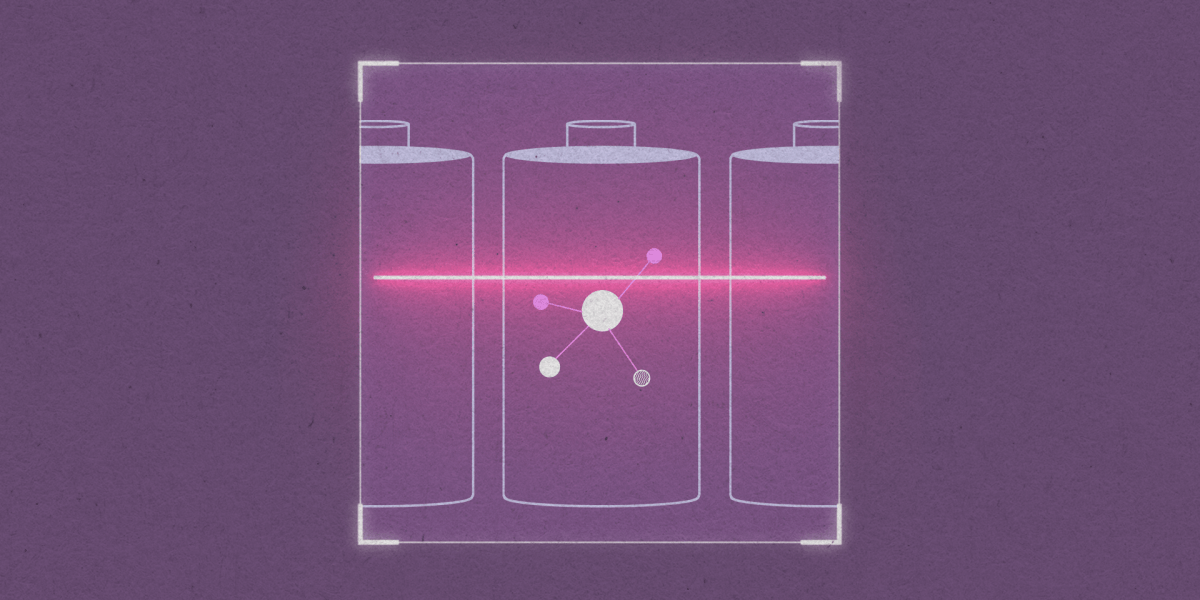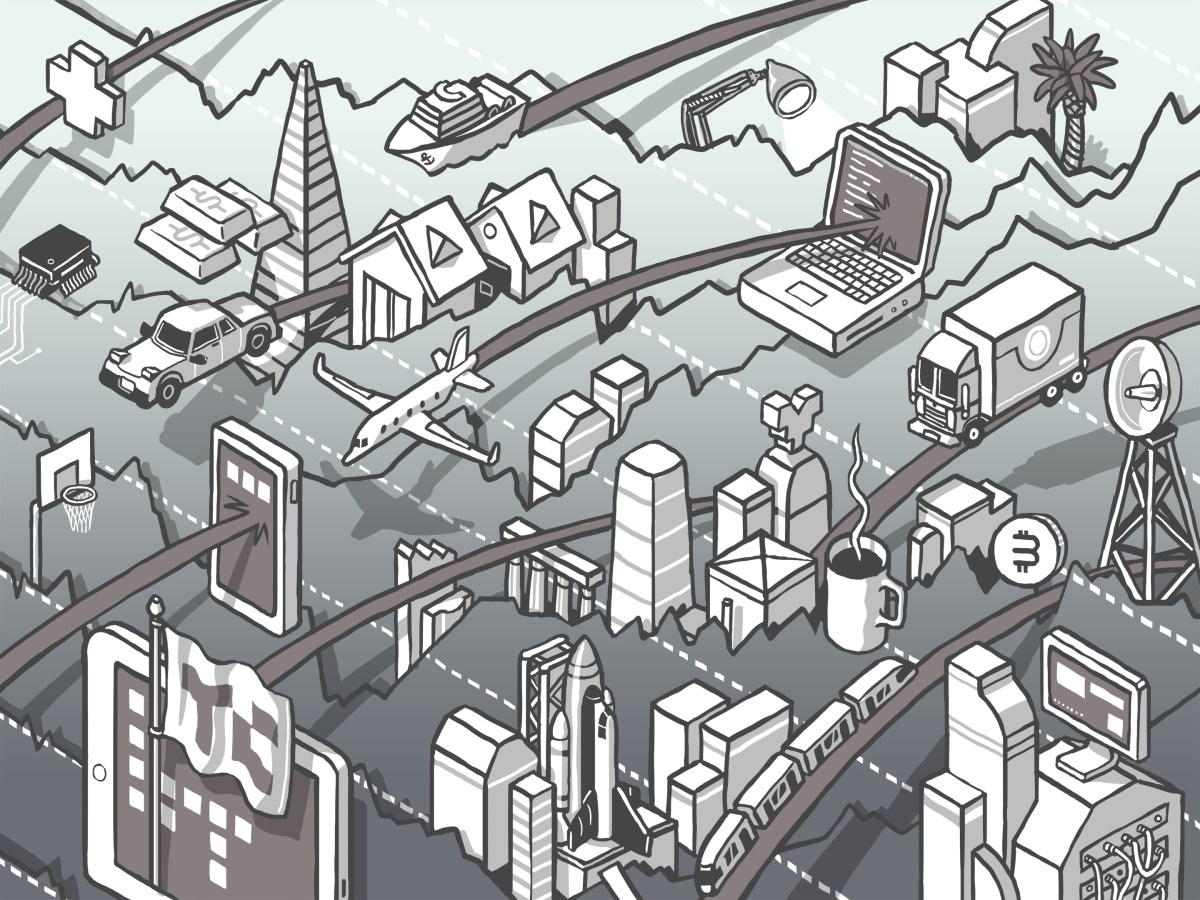How AI could supercharge battery research
This article is from The Spark, MIT Technology Review’s weekly climate newsletter. To receive it in your inbox every Wednesday, sign up here.
During one of the final sessions at our ClimateTech event last week, I got to hear about how AI could help develop battery materials for future electric sports cars.
This came during a discussion with Venkat Viswanathan about the potential for electric aviation—an exciting prospect as well as a huge challenge, given the steep demands on batteries during flight. Today’s batteries simply can’t cut it in the skies.
In our discussion, Viswanathan said one of the reasons he saw hope for electric aviation is the potential of AI to speed up battery research. In fact, he cofounded a startup called Aionics in 2020 to bring AI into battery development.
On stage at ClimateTech, Viswanathan announced a new research partnership that he says could make AI a key force in developing future EV batteries. The deal is between Aionics and Cellforce, a German battery maker that’s a subsidiary of Porsche. Aionics will help Cellforce design new electrolyte materials, in the hopes of making better batteries.
I’m still buzzing about this session and all my other chats from ClimateTech, so for the newsletter this week, let’s dive in a bit deeper and see how AI could help drive progress in batteries.
Hitting the gas
We need better batteries. EVs that can charge faster and hold more energy could help get more fossil-fuel-powered cars off the roads. And for some industries, like aviation, significant technical progress in battery chemistry will be necessary to get newer, cleaner tech off the ground.
But new batteries dreamed up in a lab have a long journey before they can be produced at large scales. It’s a road that can take well over a decade to traverse.
During our session at ClimateTech, Viswanathan outlined this problem and pointed to the fitness tracker on his wrist, which contained a battery made by Sila. Its novel anode is made with silicon, which helps pack more energy into the device. Landing on the battery chemistry for this tiny product took over 55,000 iterations, according to the company.
That’s a pretty typical situation for battery developers—and a big bottleneck for new technologies, said another Aionics’s co-founder, Austin Sendek, in a call before the event. “There’s so much urgency around batteries and climate tech in general … and this trial-and error approach of years past just won’t work,” Sendek says.
The problem is, there’s an almost unfathomable number of potential materials, and combinations of materials, to use in batteries. Sendek puts the number of commercially- available chemicals that could be used in the billions. “It’s way too many for us to know what to do with,” he says.
Aionics is working to use AI tools to help researchers find better battery chemistries faster. The company is primarily focusing on electrolyte, the material that shuttles charge around in batteries. “This is a huge opportunity for us to accelerate this whole industry,” Sendek says.
Shifting gears
So how does all this actually work? There’s a wide range of tools under the AI umbrella that Aionics hopes will help make better batteries for future EVs and other applications.
- Machine learning can sort through a wide range of options. Even considering only the chemicals that are used in batteries today, a huge number of combinations are on the table. Machine-learning tools can help design experiments to speed the process of screening these options while optimizing for a desired result. In a recent paper, Viswanathan and coauthors used these tools to find electrolytes that help batteries charge faster, as my colleague James Temple wrote last year.
- Generative AI can design new materials. It’s possible to go beyond even the billions of molecules that are available today. Using generative models trained on existing battery materials, Aionics hopes to develop new materials that haven’t been discovered yet. Those molecules can then be added to the pipeline to be synthesized and tested in batteries. The idea is similar to using AI for drug discovery, a topic that my colleague on our AI team, Will Douglas Heaven, covered in depth earlier this year.
- Large language models can help researchers work faster. In another announcement at ClimateTech, Viswanathan shared progress on a large language model that Aionics has developed, called ElectroBot. The model, which is trained on textbooks and published research in electrolyte chemistry, can help answer questions about chemical properties or give suggestions to help solve problems in the lab. These types of AI models often have a problem with “hallucinating,” or generating a response that’s not factually true. The startup is working to combat this in its model with responses that point scientists back to textbooks or published papers.
As Viswanathan put it on stage, AI could be our best shot at accelerating the battery development timeline. This is an area I’ll definitely be following closely in the future, so stay tuned for more. And in the meantime, check out some of our recent stories on battery materials and AI.
Related reading
AI and robots can help researchers develop new batteries, as my colleague James Temple covered in a story last year.
Battery materials can seem niche, but they can be crucial to getting better products onto the roads. Read more about how new materials could help you charge your EV faster in this story I wrote earlier this year.
Battery giants like BYD are scaling production at a wild pace, making batteries cheaper across the board. Read more about this company, one of our 15 to watch, in this profile from my colleague Zeyi Yang.
Another thing
In case you weren’t able to join us at ClimateTech this year, here are just a couple of highlights from the show.
That massive climate bill is still on everyone’s minds over 400 days after it passed in the US. James Temple sat down with environmental policy expert Leah Stokes to talk about this and other key ideas in climate policy. Watch the session here.
We debuted our list of 15 Climate Tech Companies to watch in 2023 on stage. In a special session, MIT Technology Review editor in chief Mat Honan and I spun through all the companies in just six minutes. In case you missed that bit of fun, you can dive into the full list here, and read more about why we decided to put this project together and how we picked the companies here.
Keeping up with climate
Oysters could help efforts to restore coastal ecosystems and boost local economies at the same time. This is a great deep dive into the science and politics of the humble oyster. (MIT Technology Review)
A new project will use hydrogen produced using renewable electricity in a power plant. It’s probably not the best use for the fuel, according to energy experts. (Canary Media)
The UN climate meeting is coming up in December in Dubai. Leading the talks is the head of the UAE’s national oil company—a controversial pick, to put it lightly. (The Guardian)
Researchers are racing to map out vast underground fungal networks. The findings could help them understand biodiversity and learn how natural ecosystems can trap and store carbon. (Washington Post)
Nobody can keep up with how fast Tesla is slashing prices. The automaker has sold over 60% of all fully electric vehicles in the US, and legacy automakers like GM and Volkswagen are struggling to keep pace. (Bloomberg)
Just checking in on climate progress: things aren’t moving fast enough. The UN panel on climate change released a special report five years ago laying out the path to keeping warming at less than 1.5 °C (2.7 °F) over preindustrial levels. We’re not on track. (The Messenger)
Climate change is breaking the insurance industry. Disasters mean sky-high damage costs, which push rates higher. (Grist)
AI could soon use as much electricity as some countries. A new study estimates that by 2027, servers used for AI could use up to 134 terawatt-hours of electricity annually—in the same ballpark as Argentina and Sweden. (New York Times)




